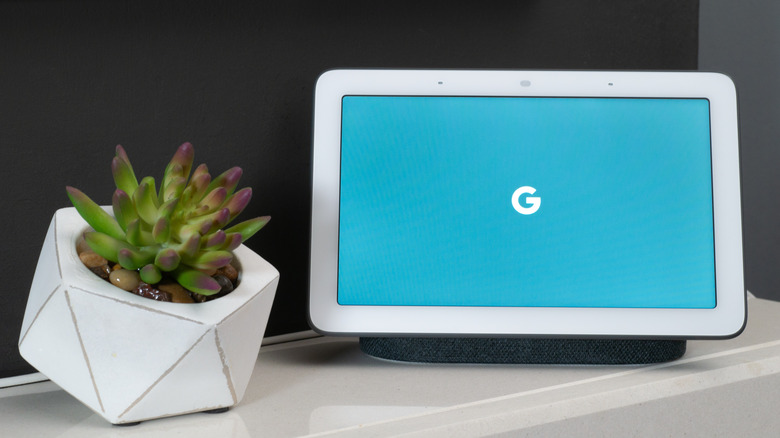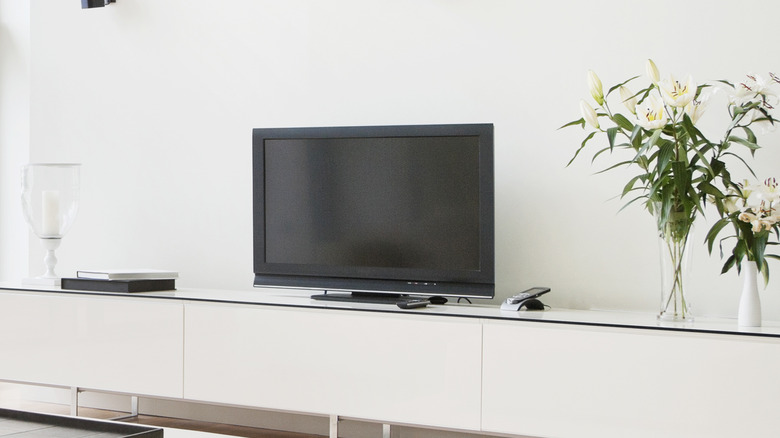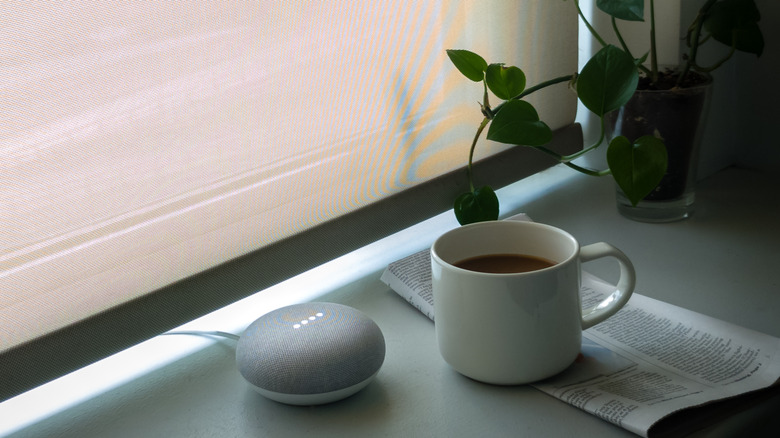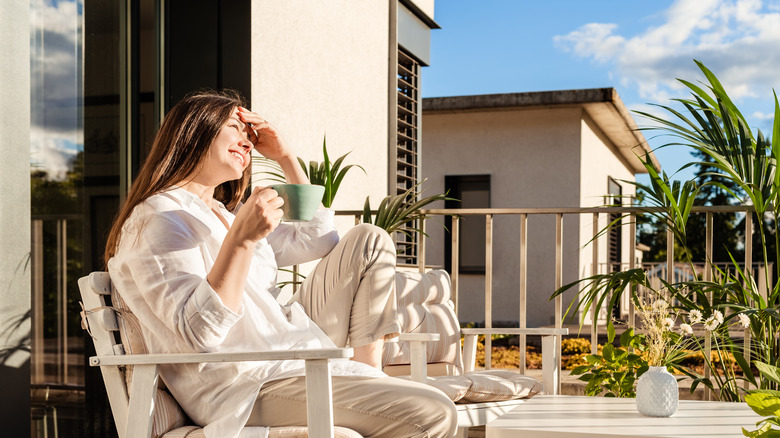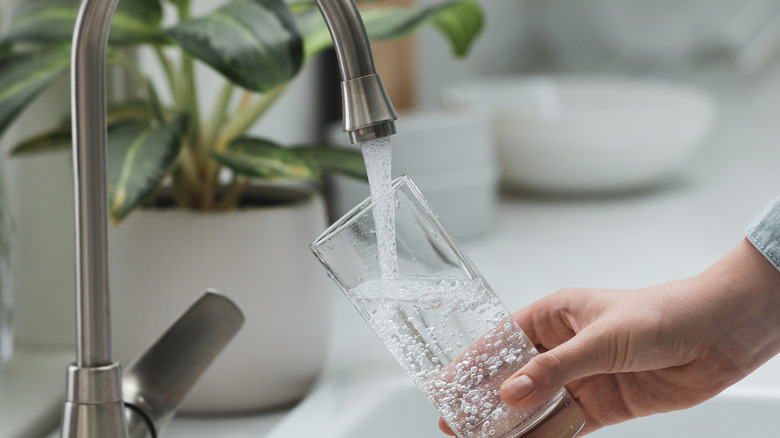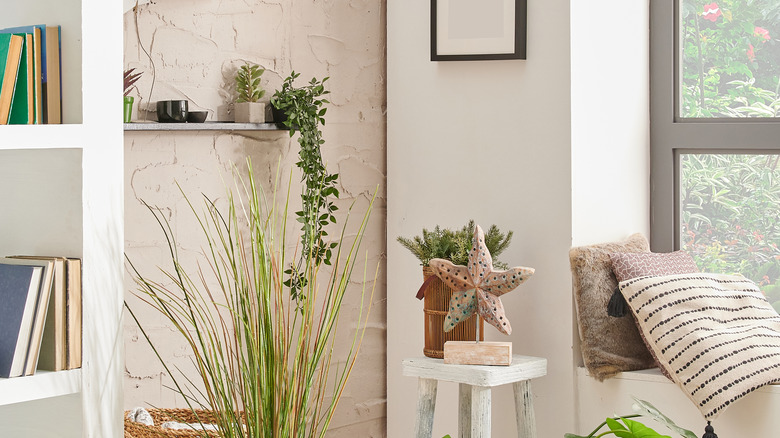Why You Shouldn't Put Your Google Home Or Nest Devices In These Places
One of the best features of Google Home or Nest devices is their versatility — you can use them essentially anywhere in your house. They're great additions to the living room for entertaining guests, controlling the TV, and blasting tunes. You can also install them in your bedroom for playing white noise, setting alarms, and checking your agenda for the day. Not to mention, they're very handy to have in the kitchen for walking you through recipes, making your shopping list, and controlling your smart coffee maker and toaster.
However, while the Google Home or Nest devices can be used in pretty much any room in your house, there are certain spots where you'll want to avoid installing them. These spots include the TV stand, window sills, outdoor areas, spots near water sources, and isolated rooms and corners. Each of these areas has its own limitations and challenges which can adversely affect your smart speaker.
Beside a TV, radio, or any other sound source
The first place you'd probably put your Google Home or Nest device is beside the TV, radio, or Bluetooth speakers. After all, it's convenient to keep all your electronics in one spot, especially if you plan to connect them with each other. This dedicated spot for electronics is also where you can typically find the most easily accessible wall sockets, eliminating the need for extension cords.
However, while the TV stand seems like a logical place for your Google Home or Nest device, it can actually become a nuisance down the line. If you're watching a show or YouTube video that mentions something relatively close to the wake words "Hey Google," your device will activate and respond to the command. That's why it's safer to keep your Google Home or Nest away from any sound source, so it doesn't perform any unwanted commands. Also, a loud audio source can prevent your speaker from hearing you in the first place.
If you really want to use it with your TV or Bluetooth speaker, you can place it far from the sound source and closer to you. You can also try adjusting the device's sensitivity to the wake word or turn the mic off after you're done using it.
By the windows
A Google Home or Nest near a window is a bad idea for a variety of reasons. Obviously, there's the risk of theft. You don't want your device to suddenly go missing.
Another reason is that the window may be in direct sunlight, causing your device to potentially overheat. If you have a Google Nest display with automatic brightness enabled, it might not only get hot but also show a very bright screen when exposed to direct sunlight. Some models of the Nest thermostat come with a Sunblock feature that automatically detects when the device is in direct sunlight and prevents it from reading the wrong temperature. But Google Home or Nest speakers and displays would be better off in a shadier part of your house.
Finally, you shouldn't put your device near a window because it becomes vulnerable to commands made by outsiders. Regardless of who is talking, Google Home or Nest automatically activates whenever it hears the wake word, giving strangers the opportunity to control your other smart home devices and maybe even make purchases for you.
On a non-covered patio/garage
There are benefits to adding your Google Home or Nest to the patio or garage. For instance, it can come in handy when you're leaving the house and have last-minute commands like turning off your smart devices or checking whether the lights are switched on. It's also great for playing your favorite tunes while hanging out on the patio or fixing your bike in the garage.
However, there are also downsides to placing your Google Home or Nest outdoors. For one, if your patio or garage is also not well-covered, you're also exposing your device to the elements that may potentially damage it. On top of that, there's the issue of security. When your device is left outdoors unattended, it would be too easy for anyone to just steal it or even worse, use it without your knowledge. That's why it's best to keep your Google Home or Nest indoors where it's safe and dry.
Near water sources
Just like how you don't want to expose your Google Home or Nest to the rain, you also don't want to place it anywhere near your indoor water sources. This includes your kitchen and bathroom sink, shower, and yes, even your toilet. Electronics generally don't do well with water, so as much as possible, make sure you install it somewhere dry.
If you want to use it in the bathroom, especially since it can be useful in situations like adding items to your grocery list or listening to music while showering, you may want to mount it on the wall farthest from your shower and toilet. A study done by the University of Colorado Boulder reported that particles from a flushed toilet can reach almost five feet above the toilet, so keep that figure in mind to prevent nasty pathogens from accumulating on your device.
If you also want to use your device in the kitchen to help you with cooking dinner, find a cozy spot on your counter away from your sink and your stove. That way, you will avoid as many water and oil spills as possible from reaching your device.
Isolated rooms and corners
Another factor you need to keep in mind when picking a spot for your device is Wi-Fi strength. Your Google Home or Nest product relies heavily on internet connectivity to function at its fullest potential. Without an internet connection, it's just a plain old Bluetooth speaker.
That's why it's important that your Google Home or Nest device has access to your home network all the time. See to it that the room you want to use it in has strong Wi-Fi signals. If you're unsure, you can use a Wi-Fi heatmap on your Android phone to find an optimal location. Also avoid placing your device in isolated corners that are behind large bookshelves, furniture, or plant since obstacles may interfere with the connection. Corners can also adversely affect the sound quality of the voice commands reaching the device. That's why it's recommended to keep it out in the open like on the coffee table or your bedside table.
